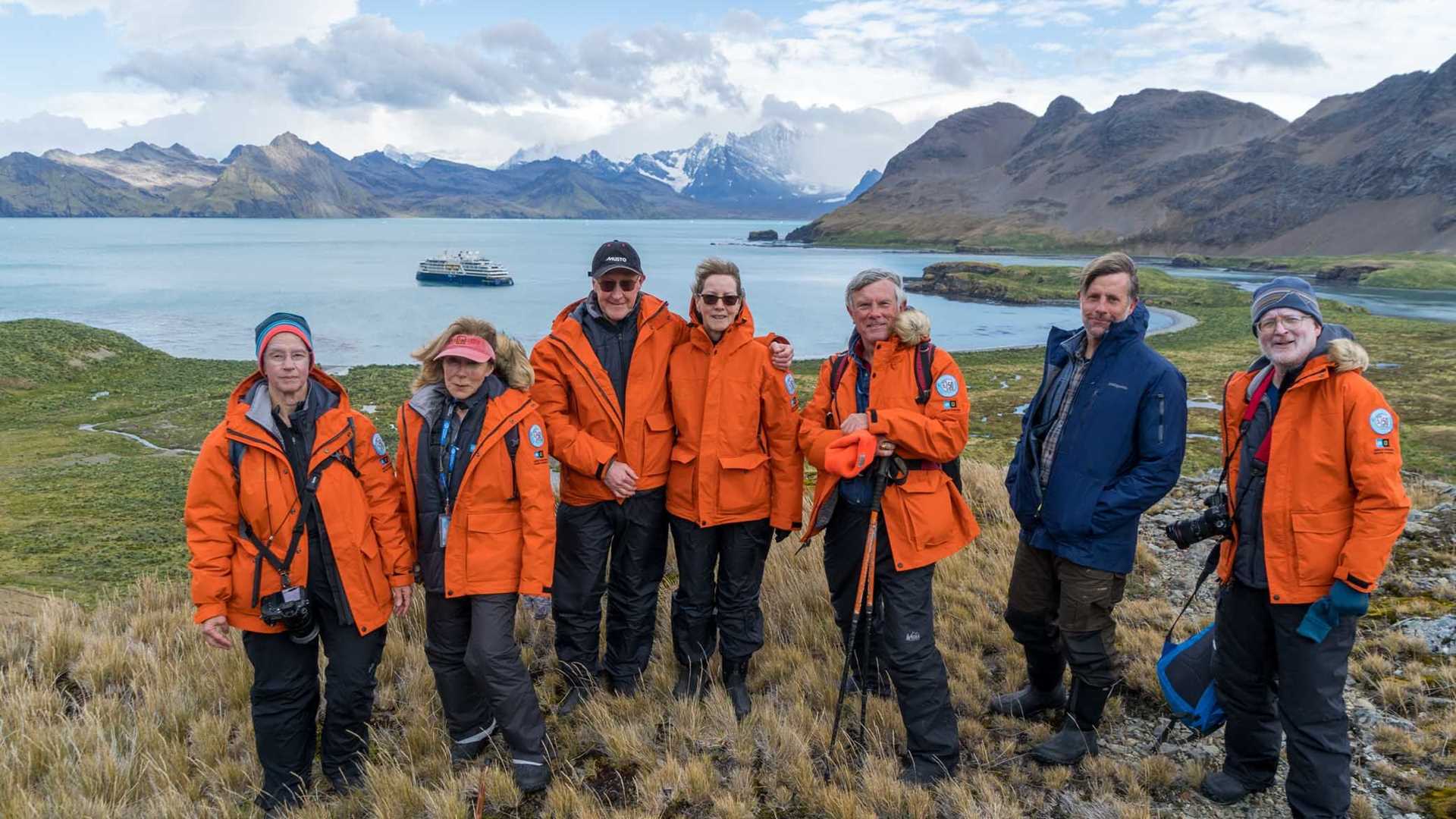It was a blustery morning at Stromness, onboard National Geographic Resolution. We spent our time ashore milling about an old whaling area and then whaling vessel repair station. Hikers spent time reflecting at the waterfall and taking in the whaling station ruins. Many of the usual suspects were ashore such as king penguins, Antarctic fur seals, and a colony of gentoo penguins.
The afternoon we enjoyed a great exploration at Jason Harbour, a new site to many of the staff and crew, who got to discover this place along with the guests. A hut that was once a post office from the early days of exploration still remains. Everyone was delighted to hike the tussock in the sunshine, coming across many elephant seals on their way.







